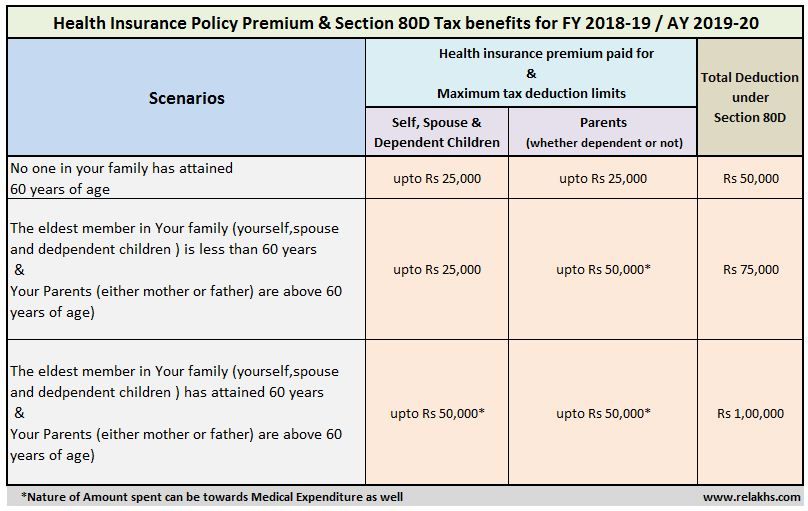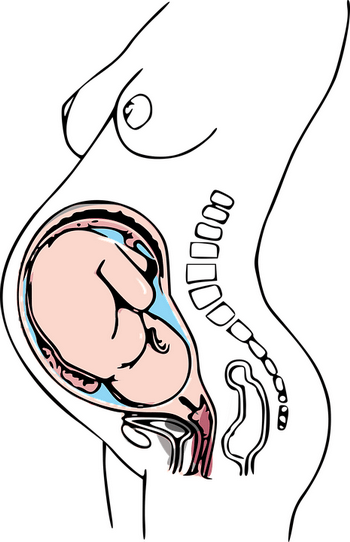Turn on baby
Flip A Breech - How to Turn a Breech Baby
Our webpage information is free to pregnant parents. Those of you that serve birthing parents can refer parents to this page to help them understand more about helping breech babies find room in the womb to turn head down; cite the source but don’t copy and paste, please.
Not every suggestion is appropriate for everyone who wants to help their baby turn. Be mindful of your health and needs so you can be safe and comfortable.
We don’t force babies to turn. Many pregnant people can make room for their baby to turn by themselves.
- Read here for information to set your own plan
- Or, order the Helping ebook and get a simplified set of instructions: Helping Your Breech Baby Turn
- Find an Aware Practitioner for an in-person or online consultation
Success is high with comprehensive body balancing
When any part of the pelvis is out of symmetry (crooked), then the ligaments supporting the womb are pulled and twisted too. The shape of the lower womb can be altered by this. The baby then has to find a way to fit that isn’t quite what nature intended. A twisted sacrum is common for breech (and posterior).
Aligning the pelvis and relaxing tight uterine ligaments attached to the fascia near the pelvis are why chiropractic adjustments can often help breech babies flip to a head-down position.
Continue body balancing at home and with professionals after the baby turns head down. One thing I’ve observed is that when the breech baby does flip head down during the last month or two of pregnancy, the baby often moves to the head down, posterior (face forward) position.
Why is Baby Breech?
A breech position may be caused by an imbalance (asymmetry) in the mother’s pelvis or soft tissues. In other words, a tension or a twist in the lower uterine segment may be a “soft tissue” issue. This is not the woman’s fault, as we simply live in an era where a slight twist in the pelvis is common. Some causes of this may be:
- Long car rides
- Crossing our legs
- Sports injuries
- Abrupt stops (fender benders, etc.
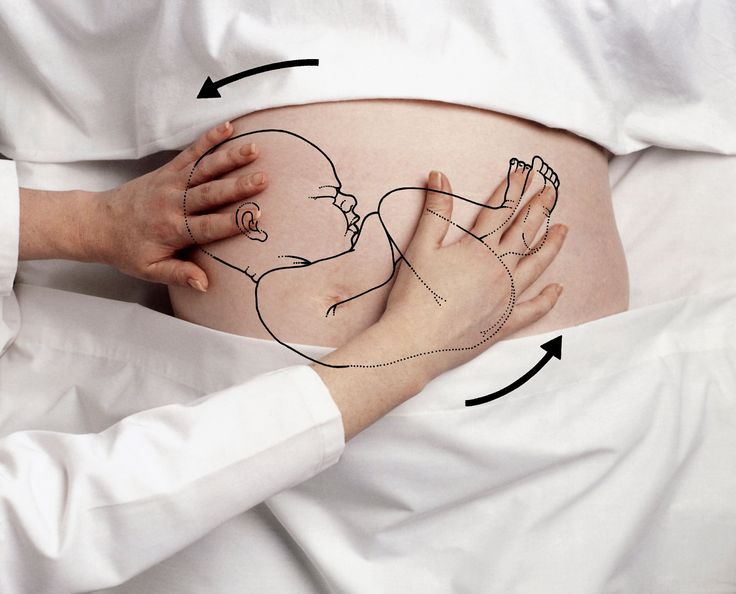 ) torquing our torso
) torquing our torso - Carrying a toddler on a hip or other hip rotation causing activities over time
- Serious falls
- A neck or ankle injury
All of these can twist the pelvis and, in turn, twist the uterus, resulting in asymmetry. Many chiropractors can loosen the ligaments by doing the Webster Technique. Adjusting the sacrum, for both a vertical twist or a buckled (horizontal wrinkle) sacrum will let the baby put their head down more readily because the bones won’t be in the way. It may often take balancing muscles and ligaments (soft tissues) and the pelvic joint alignment (not one without the other) for success.
If the baby is still breech after 30 or 32 weeks gestation:
- Do self-care exercises, like the Three BalancesSM and Daily Activities and the releases in our Techniques pages.
- Watch the Breech Consultation video below
- Try our comprehensive, 6-day plan in Helping a Breech Baby Turn ebook
- Seek professional help
Combine bodywork techniques with stretches on the Daily Activities page and, perhaps more importantly, the Weekly Activities page for a more comprehensive approach. Do the weekly activities every day for a week or two. Add Rest SmartSM but don’t expect your posture or that sitting up or lying on your left will turn baby itself.
Do the weekly activities every day for a week or two. Add Rest SmartSM but don’t expect your posture or that sitting up or lying on your left will turn baby itself.
Seek professional body work if you don’t get results after a week. After 34 weeks, call and book a session (or series of sessions) with someone who understands anatomy and fetal position, such as a Spinning Babies® Aware Practitioner or a chiropractor/osteopath with Webster certification.
Note: Body balance issues are common for breech presentation, but are not the only reason! We suggest our weekly activities on a daily basis when the baby is not head down. For video detail and more explanation, you may want to buy our Daily Essentials video for enhancing range of motion and suppleness. You can also attend a Parent Class in person, taught by one of our Spinning Babies® Certified Parent Educators.
These techniques are working for many who do them repeatedly, but be sure to ask your doctor if there is a medical reason you couldn’t try some of these suggestions. Each individual begins with their own level of need for balance. Some need a little help while others are overcoming twists or tightnesses that need just the right techniques.
Each individual begins with their own level of need for balance. Some need a little help while others are overcoming twists or tightnesses that need just the right techniques.
At Spinning Babies®, we offer techniques that work for most pregnancies with a breech position. Your doctor or midwife can monitor your progress and give further suggestions for your particular situation.
Breech Consultation Video
Spinning Babies® creator Gail Tully shows a couple two types of inversions to do together for making room for their breech baby to turn head down or to make an external cephalic version easier for the doctor to perform.
Things to keep in mind:- Breech fetal position is common before 30 weeks and often okay at 32 weeks.

- Trust your baby and trust your body, but let your body trust your habits too.
- You can begin general balancing activities without knowing fetal position.
- Do not use the Breech Tilt and Open-Knee-Chest in pregnancy unless you know baby is breech.
- Put yourself in the position you want your baby to be in—head down!
- Share your plan with your caregiver before you begin.
- Talk to your baby, heart to heart, and tell your baby what you want – and ask your baby what he/she needs in this situation too.
- When your womb is in balance, the baby is likely to flip head down spontaneously.
- If the baby is still breech at 37 weeks or later, you may receive medical advice to have an external cephalic version (ECV).
 Doing daily and weekly balancing activities before the ECV seems to help the procedure be more successful (and easier).
Doing daily and weekly balancing activities before the ECV seems to help the procedure be more successful (and easier). - Is one or both of your twins breech? Check out my article on twins.
- By 30-31 weeks, I highly recommend beginning the Forward-leaning Inversion position to encourage a head-down position.
- From 30 weeks on you can start the 6-day plan in our Helping Your Breech Baby Turn ebook.
- After 32-34 weeks, chiropractic adjustments are suggested.
- 34-35 weeks is the most successful time to use Moxibustion.
A detailed timeline is given for introducing techniques in pregnancies with breech babies. Look up your weeks gestation and do the suggestions for how to turn a breech baby listed there if you so choose. We have a handy exercise chart in our ebook as well.
We have a handy exercise chart in our ebook as well.
- Forward-leaning Inversion, 5-7 times once a day for 30 seconds each, about 15-120 minutes apart
- Follow the FLI with a Breech Tilt or Open Knee-Chest
- Side-lying Release on both sides for several minutes on each side (don’t do one side only)
- Listen to your baby! Ask the baby what they might need you to do to help them turn. Wait gently (not willfully) for an answer.
- Gently jiggling hips and sitz bones, thighs and buttocks
- Moxibustion (especially between 34-36 weeks) 2 times a day
- Stand on your head in a swimming pool (deep enough to cover your belly)
- Chiropractic Webster Maneuver and aligning the pubic symphysis (pubic bone)
- Maya abdominal massage and Rebozo Manteada (Sifting)
- Psoas Resolution
- Leg circles—these release areas of fibrous adhesion by moving the ball inside the leg socket.
 This is a gentle technique, traditional to Russia and rediscovered by soft tissue body workers today. (See the photo with Gail below for a variation on this.)
This is a gentle technique, traditional to Russia and rediscovered by soft tissue body workers today. (See the photo with Gail below for a variation on this.) - Deep, circular mini massages between the rib and abdomen all along the edge of the front of the rib cage to loosen the superficial margin between the fascia around the rib cage, the respiratory diaphragm, and the peritoneum.
- Release tension with deep, circular massages along the margin from the hip to the top of the pubic bone on both sides.
- Do figure 8’s of the hips (as in belly dancing)
- Craniosacral therapy and myofascial release (more than the 3 releases I mention here)
- Hypnosis and/or journaling
- Loose ligaments may be supported by wearing a pregnancy belt (Add a belt if you have had several babies and now are carrying your baby in a breech position.
 Do the above techniques the same, but wear a belt afterward.)
Do the above techniques the same, but wear a belt afterward.)
circles release minor adhesions in the leg socket and allow mobility in the connective tissue.
- The womb has a septum or unusual shape
- The baby is wrapped in a particular way by the cord (not as common as is claimed)
- If you’re having twins and one twin blocks the flipping movement of the breech twin
- Torsion causes reduced space in the lower uterine segment and it was not overcome or corrected by the woman’s selected activities (do more on the list above)
- There’s uncorrected torsion in the lower uterine segment (find another body worker)
- Intense core strength (6-pack belly)
Note: If you find that these exercises don’t work, it may increase emotional stress about having a breech birth. Whether or not the exercises work is not an indication of whether the vaginal breech birth will go smoothly or not.
Whether or not the exercises work is not an indication of whether the vaginal breech birth will go smoothly or not.
For best success, begin professional help at 34 weeks. This opinion is shared by both Oxorn and Foote in Obstetrics Illustrated.
Professional help may include:
- Maya massage
- Chiropractic Webster Maneuver
- Chiropractic adjustment
- Therapeutic massage
- Homeopathy
- Acupuncture
- Fascial Therapy
- Craniosacral
- Hypnosis
- External cephalic version
You can see a list of professionals trained in our techniques in our Spinning Babies® Aware Practitioner listings.
If your baby was breech and is now head down, you can stop the inversions for a few days. Walk briskly for a mile or more every day for three days to get the baby’s head into the pelvis. After three days of walking, resume Forward-leaning Inversion once a day and the Abdominal and standing releases to continue the balance that will help the baby stay head down and rotate more readily once labor begins.
How can I tell when the baby flips?When Baby Flips Head Down
You may or may not notice when the baby turns. You might be able to tell if the breech flips by feeling the feet kick where the head had been before. Usually, the strongest kicks are from the legs (not the arms) and will be high in the womb when the head is low.
An anterior placenta (one that gets on the front of the womb) can block the baby’s limb movement and confuse people who are trying to tell the baby’s position. More often, a mother will notice a difference in how she is carrying the baby.
Notice where your baby is kicking. If it is quite different and is now strong at the top of your womb, you may want to stop measures to flip the baby. If it stays the same, you might want to continue until you can get the midwife or doctor to verify the baby’s position.
I offer an article on Breech Belly Mapping or you can buy the Belly Mapping® book.
What if I think my breech baby has flipped head down, but I’m not sure?If you think the baby may have flipped head down, but you aren’t sure, you can either cease doing inversions until you do know for sure, or simply hold the Forward-leaning Inversion position for 30 seconds (or 3 long breaths).
If head down, will the baby flip breech if I do a Forward-leaning Inversion?I think it’s unlikely that your baby will flip back to breech after balancing your body, unless the muscles and ligaments tighten up again. That said, keep your inversions short and do them only once a day. Don’t do the breech tilt if you think the baby may have gotten head down.
Don’t do the breech tilt if you think the baby may have gotten head down.
If you have a lot of amniotic fluid around your baby, so that a doctor needs to see you often, you should do other balancing activities like the Side-lying Release. Whether the baby flips on their own or with the help of an experienced midwife or doctor, the newly head-down baby is often in the right occiput posterior position.
A daily Forward-leaning Inversion can continue to help the baby get into an even better position for the start of labor. Remember, head down is only half the story!
Balancing techniques could help a vaginal breech birth go more smoothly. Always use physiologic breech birth practices (knee-elbow or hands-and-knees maternal position, hands-off the breech, natural childbirth, etc.).
Otherwise, a cesarean after labor begins gives the baby a bit of labor hormones to help transition into life outside the womb. Discuss these options with your midwife or doctor. There is currently better data in obstetrics to support physiological breech vaginal birth.
Consider that another week of healthy gestation, up to 40 weeks, has nothing but benefits for your baby. If you or your baby are not healthy, or if there is a prolapsed cord, you may need medical help.
Keep reading, keep balancing, and keep talking about what is beneficial for you and your baby with your provider. If you’d like to read more, here’s an article about the Window of Opportunity for Flipping Your Breech Baby.
VBAC-hopeful mama devotes a week to getting her baby head downI just wanted to let you know that I appreciated your help, and that at 34 weeks, me, my chiropractor, and my midwife are all pretty sure that the baby has flipped head down, to what your site basically calls a LOT position. It was a week-long process that wasn’t complete until I had done 3 Webster appointments, plus a bunch of inversions and doing your “daily activities” on your DVD every day, but it seems to have worked!
-Rebekah B.
A doula helps avoid a cesareanHi Gail. I was in your workshop in Farmington Hills. I’m a doula from Windsor, Ontario, and I really wanted to let you know that I have a client who is now due in 10 days and her OB was threatening a c-section as the baby was malpositioned [Erin later said the baby was breech]. But after we did the exercises, inversions, and fascial releases, we were able to make room for the baby to move. As of the last ultrasound, the baby is head down, and now mom will be able to have the delivery she wanted. Thank you so much for sharing your techniques.
I was in your workshop in Farmington Hills. I’m a doula from Windsor, Ontario, and I really wanted to let you know that I have a client who is now due in 10 days and her OB was threatening a c-section as the baby was malpositioned [Erin later said the baby was breech]. But after we did the exercises, inversions, and fascial releases, we were able to make room for the baby to move. As of the last ultrasound, the baby is head down, and now mom will be able to have the delivery she wanted. Thank you so much for sharing your techniques.
-Erin M Seguin RMT, Doula
I just found out my baby is breechI received this email from a woman who found out her baby is breech. You can read my response to her below.
I recently found out my baby is breech. This is a 2nd baby. My first was a very calm baby and was always head down. This one is QUITE active and apparently flipped in the 4 days between my midwife appointment and an ultrasound (they thought my placenta was low… it’s ok).
I exercise 3-5 times a week. I eat well and am in good shape. I am seeing a chiropractor … Initially, saw her for “shifty hips” that would pop out of joint… hasn’t happened since.
My only pregnancy problem (with both) is uterine irritability… I’ve tried cramp bark tea for this but usually the only solution is to sit down. If I don’t nip it in the bud, it progresses to quite strong contractions where I vomit. My uterus is often quite tight for hours on end when I am walking around or at work (I’m a nurse). I was much worse with my son (they kept thinking it was preterm labor but my cervix never opened). Of note, he was a very quick and easy labor/ birth (less than 4 hours)– maybe from all the uterine toning?
Here are my questions:
- The Chiropractor did a Webster Maneuver once; usually she is cracking my back and neck and hips and such. Should she be doing Webster every week? What should I be expecting from her? I’ve never seen a Chiro before.
 I haven’t seen her yet since the baby flipped.
I haven’t seen her yet since the baby flipped. - How does my uterine irritability play into all this? My midwife said I had very good abdominal tone also. Is this hurting things?
- I’m being more diligent about my posture now and I’ll start some tilts/ inversions (already doing pelvic rocks). I’ll see if my husband can try the Rebozo sifting on me– would a Maya wrap sling work okay for a scarf?
- I plan to have a home/water birth with a CNM. I know she won’t do breech births at home. I’d be willing to give it a go if there was a practitioner. My mom and grandma were both easy birthers and I’m shaped like my grandma who popped 10 kids out on the farm ?
- Any other thoughts/suggestions? Thank you so much for your time. I better go do my pelvic rocks– the baby is dancing around in there!
Gail’s reply:
Your contraction symptoms and the baby’s breech position seem to match the picture of asymmetrical ligaments.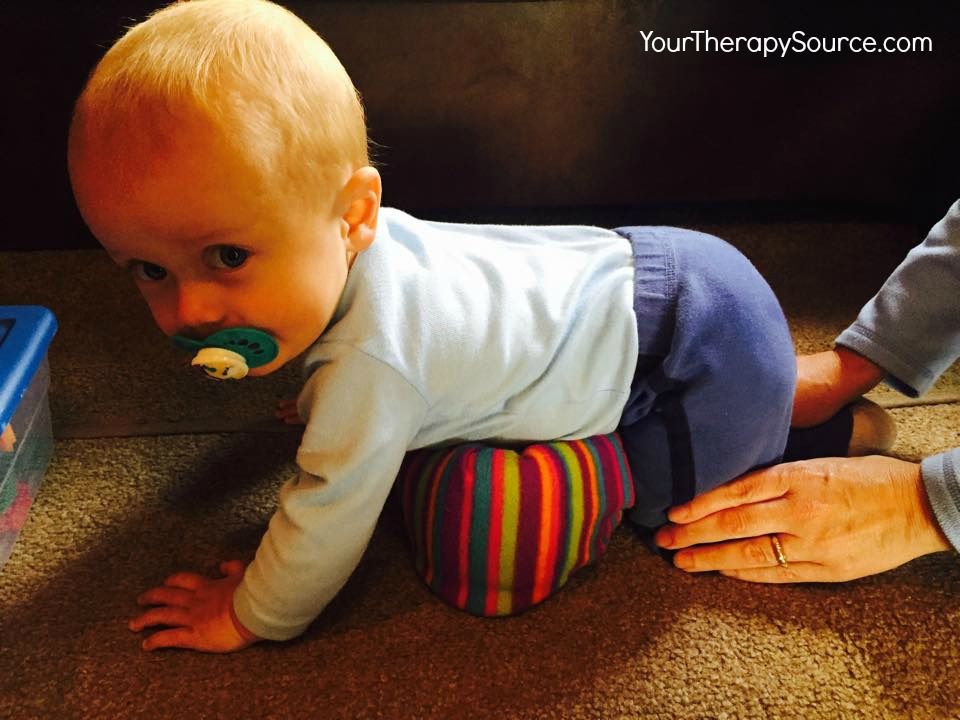
- The Webster Maneuver would help the round ligaments.
- Inversions will help the cervical ligaments first and then help the broad and round ligaments somewhat as well.
- Pelvic adjustment releases any possible pulls on the ligaments supporting the womb from even a slight misalignment of the pelvic joints.
- Get the abdomen ligaments relaxed and then supported. A pregnancy belt may help the looseness that makes it hard for the baby to have a toned slope to settle head down on.
- When a baby is breech, the first action is to relax a twist in the womb using the above methods.
Now see my answers to your five questions below.
Question 1: The Chiropractor may have to adjust the pelvis in three ways
Suggest your chiropractor check:
- The sacrum vertically (SI joints) for a twist at the ala
- The sacrum horizontally for a buckle (wrinkle) that a sacral release will undo
- The pubis symphysis
The Webster Maneuver is a gentle press on the round ligaments in a specific direction to soften the ligament. It takes just a few moments and will soften a cramp, spasm, or even “good tone” to allow the baby to flip past the ligaments into a head-down position. Releasing a kink or tightness in the round ligaments also helps the uterus become more symmetrical, which helps the baby into an ideal starting position for labor.
It takes just a few moments and will soften a cramp, spasm, or even “good tone” to allow the baby to flip past the ligaments into a head-down position. Releasing a kink or tightness in the round ligaments also helps the uterus become more symmetrical, which helps the baby into an ideal starting position for labor.
The Webster can be done repeatedly, weekly, or bi-weekly if in the last month or two. It is one step in helping a breech baby flip. Sometimes it is the only step needed, especially if repeated about 3-4 times. However, occasionally you may need more body work or self-care to flip a breech baby.
Question 2: Pelvic alignment and ligament release will help uterine irritability, especially getting the sacrum “unbuckled”
After a sacral release, you may wear a belt as much as possible to support a loose abdominal wall. There are other ways to help uterine “irritability” as well. Good tone may be too tight for a broad ligament. A tight broad ligament often goes along with an asymmetry in the round ligaments. Releasing it helps the baby turn past it.
Releasing it helps the baby turn past it.
Carol Phillips, DC, who taught me about the myofascial world, says that premature contractions are often solved by a sacral release (standing sacral release). The moms that I suggested to have this type of bodywork done have found it to work. I also suggest a high protein, whole foods diet with plenty of leafy greens, yellow veggies, Omega 3s, liquids, and salt-to-taste (basically a Brewer Diet and then some).
Question 3: Posture, inversions, and Rebozo
Using the Rest Smart℠ positions will be helpful, of course, but probably not enough to help the baby flip on his or her own after 32-34 weeks. However, you should have a clear idea of several things you can do yourself, and the body work that will help.
Continue with inversions. I suggest the method of getting upside down shown in the video demonstration on this page.
The Jiggle;, a Belly Hug; or Manteada with a Rebozo helps maintain the balance and releases tension in the abdomen. Traditional Midwives of Mexico, Central America and some South American countries use a Rebozo (a long woven cloth) helps relax the broad ligament if you can relax your belly into it like a hammock and your partner can lift the weight of the baby off your spine without scrunching into it. Start slowly and do short jiggles until your involuntary muscles can relax (about 3 minutes). Repeat daily as possible.
Traditional Midwives of Mexico, Central America and some South American countries use a Rebozo (a long woven cloth) helps relax the broad ligament if you can relax your belly into it like a hammock and your partner can lift the weight of the baby off your spine without scrunching into it. Start slowly and do short jiggles until your involuntary muscles can relax (about 3 minutes). Repeat daily as possible.
Traditional Russian midwives use a similar cloth in other ways to help balance the body.
Question 4: Finding an attendant for a vaginal breech birth
Your clarity on your ability to birth a breech baby is one of several aspects of safety for breech vaginal birth. An important physical assessment will help determine if a vaginal breech birth might be safe in your situation. Searching out an experienced midwife or physician in breech birth is a challenge, but a necessary one if you decide to have your baby naturally at home or in the hospital.
You will have to ask at midwifery circles, home birth support groups, cesarean prevention groups, and teaching hospitals for referrals. Having an experienced person reduces the risk of breech birth but doesn’t eliminate it altogether.
Having an experienced person reduces the risk of breech birth but doesn’t eliminate it altogether.
Question 5: Besides fascial therapy for uterine “irritability,” I suggest the following:
- Drink 3-4 cups of bulk red raspberry leaf tea daily (if you don’t have sensitivities to dried herbs, of course). Use 2 tablespoons in a wire mesh strainer and fill a quart jar with almost boiling water to steep for 5-6 minutes. Remove the herbs and drink hot or cold, and straight or with a splash of apple juice.
- Eat plenty of protein, but watch the peanut butter (it’s hard for a pregnant liver to process).
- Check for a calcium magnesium supplement that is easy to absorb.
- Wear a snug pregnancy belt.
The timing of body balance can allow baby to turn or be too late. Some will wait to try these techniques until they are already 34 weeks pregnant and for them, that may be too late. Others do one technique at 40 weeks and it works. How do you know which you will be?
Some will wait to try these techniques until they are already 34 weeks pregnant and for them, that may be too late. Others do one technique at 40 weeks and it works. How do you know which you will be?
Helping your baby flip head down is mostly a matter of finding what your womb needs for your baby, and listening to what your baby is telling you is needed in order to flip.
I believe you will do what your being feels comfortable doing. If not changing what you are doing is most comfortable to you, that’s ok. If exploring new activities, possibilities and people is comfortable, you will feel more ease in exploring your body and the balance this approach brings.
Think about a moment next year when you are looking back at this time. I hope you feel nurtured, bold, and proud of yourself for trying the things you felt were fine for you and in the amount of effort that was empowering to you.
Videos
Daily Essentials
Daily Essentials can be practiced daily throughout pregnancy to help bring balance and comfort — and an easier, shorter birth.
Learn More
Spinning Babies® Parent Class
Spinning Babies® Parent Class provides clear instructions on how to use Spinning Babies® for a more comfortable and confident pregnancy and labor.
Learn More
Featured Products
Shop Spinning Babies®
7 ways to turn a breech baby
You just found out your baby’s in the breech position and you’re panicking. Before you search the internet for “how to turn a breech baby,” read this.
First of all, don’t stress out. Just because your care provider thinks the baby is breech doesn’t mean you’ll automatically have to have a C-section, especially if you’re not yet 36 weeks along. Somewhere around the 34-week mark my midwife thought my son might be breech, and all of a sudden every midwife in the whole practice seemed to crowd into the exam room to chime in about acupuncture, yoga, confusing acronyms I’d never heard of, and something called moxibustion. I felt totally overwhelmed by all the options and techniques they were suggesting. (Eventually, an ultrasound revealed that what the midwives thought was the baby’s head was actually his bum—phew. Crisis averted.)
Somewhere around the 34-week mark my midwife thought my son might be breech, and all of a sudden every midwife in the whole practice seemed to crowd into the exam room to chime in about acupuncture, yoga, confusing acronyms I’d never heard of, and something called moxibustion. I felt totally overwhelmed by all the options and techniques they were suggesting. (Eventually, an ultrasound revealed that what the midwives thought was the baby’s head was actually his bum—phew. Crisis averted.)
It’s also important to know that the easiest technique for turning a breech baby is extremely low-effort: just give it time. Most babies do turn on their own before their due date. In fact, your chances of having a breech baby decrease with each passing week. While about 30 per cent of babies are breech at 30-32 weeks, only 3 per cent are still breech at term (37 weeks), says OB-GYN Ellen Giesbrecht, a doctor at BC Women’s Hospital in Vancouver.
You may have also heard that yoga positions, swimming, belly dancing, spending time upside down, or doing exercises like pelvic tilts can help. “Many of these are just about using the principle of gravity to get the baby’s bum up and out of the pelvis,” explains Giesbrecht.
“Many of these are just about using the principle of gravity to get the baby’s bum up and out of the pelvis,” explains Giesbrecht.
Interestingly, the majority of babies will turn at night, when you’re sleeping, due to your reclined position. “Many moms don’t even notice when the baby turns,” says Ruth Comfort, a registered midwife at the South Community Birth Program and Assistant Head of Midwifery at BC Women’s Hospital and St. Paul’s Hospital in Vancouver.
There are several types of breech presentation: frank breech (the baby’s bum—and not his head—is over your cervix, and his feet are way up near his face folded in a jackknife position instead of tucked in), footling breech (one or both feet are below the baby’s bum and sitting above your cervix) and complete breech (instead of being head-down, the baby’s bum is over your cervix, and his knees are tucked up against his chest, in a ball). Bum-first or feet-first is not the optimal position for a vaginal delivery.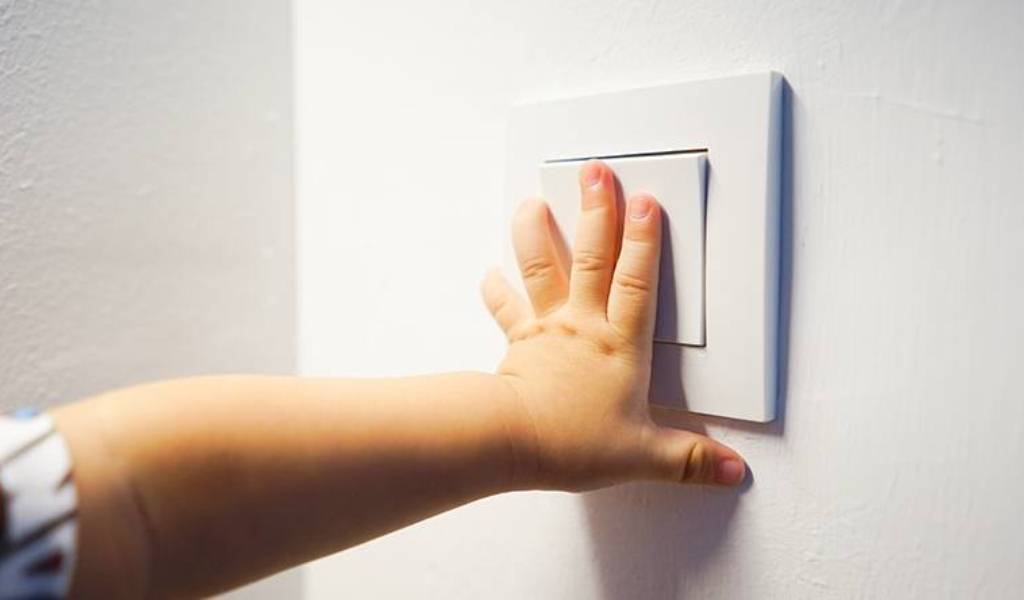 Many hospitals and OBs will not allow women to attempt vaginal breech births (though some do specialize in this—ask your provider), and midwives in Canada don’t typically deliver breech babies, either. Attempting a home birth with a breech baby is not recommended.
Many hospitals and OBs will not allow women to attempt vaginal breech births (though some do specialize in this—ask your provider), and midwives in Canada don’t typically deliver breech babies, either. Attempting a home birth with a breech baby is not recommended.
Midwife Ruth Comfort advises women to start by having a conversation with their provider about what kind of breech you’re dealing with. “That affects the efficacy of alternative techniques. It’s tricky because every woman is so different, and the reason her baby is breech may be different, too.”
First-time moms, or women who are extremely fit, may have more trouble getting a baby to move out of a breech position due to tighter pelvic and abdominal muscles, says Comfort. Women having a second or third child may have more luck with babies who turn spontaneously. (However, says Giesbrecht, “the more babies you have, the higher your chances of having a breech baby—that’s just statistics.”)
A uterine fibroid or the specific shape of your pelvis may mean the baby does not have room to turn, and that there’s little chance that any of the following methods will work. It could be that the cord is tangled around the baby’s leg or shoulder. (Unfortunately, this is not easily ascertained in an ultrasound, so sometimes there’s no way to know.) It could be that the baby went through a growth spurt and got trapped in a bum-down position.
It could be that the cord is tangled around the baby’s leg or shoulder. (Unfortunately, this is not easily ascertained in an ultrasound, so sometimes there’s no way to know.) It could be that the baby went through a growth spurt and got trapped in a bum-down position.
“If the cord isn’t an issue and the baby isn’t deeply engaged or wedged in the pelvis, the goal is to give the baby the space to turn on their own,” explains Comfort.
Here’s a breakdown of the most common techniques for turning a breech baby.
1. ECVThis intimidating-sounding acronym stands for external cephalic version, and it’s an intervention performed at a hospital, clinic or birth-care centre under ultrasound guidance. The doctor would use her hands to manipulate the baby’s position by carefully pushing on your belly and abdomen. ECV is usually best performed between 35-38 weeks, after nothing else has worked. The baby’s vital signs are monitored before and after the procedure. According to the medical literature, says Giesbrecht, ECV has about a 40 to 70 per cent success rate. But in her professional experience as an OB, she sees about a 50 per cent success rate. The procedure only takes a few minutes, but it can be very uncomfortable for women. “It’s painful,” says Giesbrecht, “but it’s less painful than recovering from a C-section if the baby does not turn.” Spinal epidurals for pain relief are an option, but your epidural would last much longer than the 2- to 5-minute ECV procedure. (Epidurals during ECV do not improve success rates, adds Giesbrecht.)
According to the medical literature, says Giesbrecht, ECV has about a 40 to 70 per cent success rate. But in her professional experience as an OB, she sees about a 50 per cent success rate. The procedure only takes a few minutes, but it can be very uncomfortable for women. “It’s painful,” says Giesbrecht, “but it’s less painful than recovering from a C-section if the baby does not turn.” Spinal epidurals for pain relief are an option, but your epidural would last much longer than the 2- to 5-minute ECV procedure. (Epidurals during ECV do not improve success rates, adds Giesbrecht.)
These are postures that Comfort recommends to all pregnant women for optimal fetal positioning as your due date approaches—whether you’re carrying a breech baby or not. For 10 to 15 minutes before bed, or while watching TV, rest in child’s pose or rock back and forth on your hands and knees, if you’re comfortable. This helps with relaxing the pelvic muscles and the gravitational pull inside your uterus. Comfort says that while this technique is not “evidence-based,” it’s also not harmful. You might also try some gentle pelvic rotations—gyrating your hips as if you’re trying to belly-dance—to encourage the baby to move around.
Comfort says that while this technique is not “evidence-based,” it’s also not harmful. You might also try some gentle pelvic rotations—gyrating your hips as if you’re trying to belly-dance—to encourage the baby to move around.
Moxibustion is a form of Chinese medicine and acupuncture, but instead of acupuncture needles, a practitioner applies gentle heat in the form of a mugwort stick, which looks a bit like a cigar. Only one end is lit, and the other (unlit!) end is gently applied to a pressure point on a pregnant woman’s baby toe (known as BL67). Giesbrecht, the OB, says that meta-analyses of acupuncture and moxibustion show there’s no adverse effects, but that these techniques aren’t necessarily proven to help, either. “There are no clear benefits or risks. It’s no better than waiting, but it does no harm,” she says.
Midwife Ruth Comfort, however, points to research from Europe. “There are some really good European studies proving efficacy of acupuncture on fetal position, as early as 32 weeks of gestation.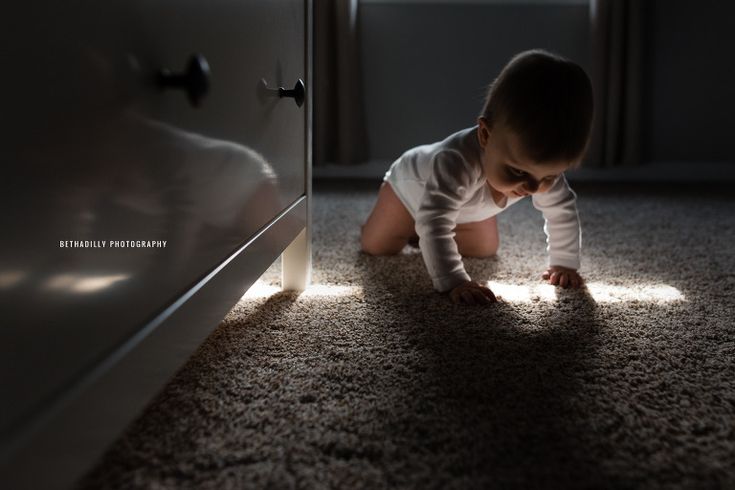 ”
”
Chiropractics and, more specifically, the Webster technique (you can watch videos online), are about addressing asymmetry in the pelvis and hipbones. If you’re used to visiting a chiropractor regularly, ask him or her to check for tighter or shorter ligaments. “This method is about realigning the pelvis and optimizing space for fetal descent, but trust your instincts,” says Comfort. “Don’t do anything you’re not comfortable with.”
5. Pelvic tilt (aka the ironing-board technique)The breech tilt, or pelvic tilt, essentially means lying on the floor and raising your hips, with your feet planted on the ground and your knees bent. Or, some women position an ironing board so that one end is on the edge of a couch, and the other end is on the floor, creating a sloping bridge. Lie on the ironing board with your head resting on a pillow and your feet elevated, for a 20-minute period. (How you get your pregnant self onto, and off, this ironing board is definitely not going to be graceful. Ask for help.) “Other than the risk of a headache—and one of my patients busting an ironing board while she was lying on it—there are no adverse effects of this method,” Giesbrecht laughs.
(How you get your pregnant self onto, and off, this ironing board is definitely not going to be graceful. Ask for help.) “Other than the risk of a headache—and one of my patients busting an ironing board while she was lying on it—there are no adverse effects of this method,” Giesbrecht laughs.
Swimming, says Comfort, may not have proven results for turning breech babies, but can be quite relaxing for women. It’s therapeutic for tired joints and achy muscles late in pregnancy anyway, and it won’t hurt the baby.
7. MusicHave you heard old wives’ tales about playing music to your belly? The theory is that directing tunes toward the base of your bump might coax a baby whose head is near your ribs to turn toward a head-down (also known as vertex) position, closer to the cervix and birth canal. There is no medical evidence to support this method, however. “I’m not even going to comment on that,” says Giesbrecht.
Depending on how many weeks pregnant you are, and what kinds of alternative therapies you’re comfortable with, you may consider all—or none—of the above suggestions before it’s time to adapt your birth plan.
“Between 34 and 36 weeks we encourage as many natural techniques as you want to try—that, plus simply giving it time,” says Comfort. “It’s only at the 36- or 37-week mark that you’d book an ECV, begin to plan a C-section, or pursue a vaginal breech birth, if it’s an option for you.”
This can, of course, be frustrating: after a pregnancy that felt like smooth sailing, a flurry of decisions may need to be made last-minute, depending on fetal size, breech position, and—once the big day arrives—the length of your labour. Some pregnant women have difficulty adjusting to the reality that they can no longer go forward with the kind of birth they’d always envisioned.
“There’s a lot of grief around giving up the idea that you’re low-risk, that you’re no longer having a ‘normal’ pregnancy, and that you can’t have the delivery you expected,” says Comfort. “But I tell my patients not to worry too much and not to feel guilty if the baby won’t turn. Trust the baby—he or she may be breech for a good reason.”
Watch Baby Grow!
Subscribe to Today’s Parent’s baby newsletter and find out what to expect for every stage and milestone, from birth to two years.- Email*
- Baby's due/birth date*
Month223456789101112
Day12345678910111213141516171819202122232425262728293031
Year2024202320222021
- CAPTCHA
- Consent*
Yes, I would like to receive Today's Parent's Baby newsletter.
 I understand I can unsubscribe at any time.**
I understand I can unsubscribe at any time.**
FILED UNDER: C-section Giving birth health service seo Labour and delivery Pregnancy
Putin compared the US leadership to a mischievous child
June 30, 2021 15:04
The world is changing, and if the United States realizes this and rethinks its own priorities, Russian-American relations may return to normal. This was stated by the President of the Russian Federation during the "Direct Line with Vladimir Putin".
Vladimir Putin hopes that the US will be able to rethink its priorities, and then Russian-American relations will normalize.
The world is changing, Putin recalled during the "Direct Line", and the realization of this "will lead to the fact that the world order will nevertheless take on a more presentable character. "
"
Answering a question from Andrey Cheremisov from St. Petersburg, the President gave the example of a familiar family with a small child. “He still doesn’t know how to speak, he messed up. His mother strictly tells him to never do that again, turn on your head,” Putin said. The child, according to him, at the same moment tapped his forehead with his finger. "He turned on his head, well done," the president summed up.
Analysts, scientists and practitioners in the US are the same conditional mom and dad, Putin continued. They make recommendations to the political leadership of the country, saying that the period of US hegemony, which began after the end of the Cold War and the collapse of the USSR, has passed, and the authorities in the United States must act on this understanding. The world is changing rapidly, it has ceased to be unipolar.
Russia is developing, despite the sanctions, said the head of state. "Its economic sovereignty is increasing, its defense capability has reached a very high level," Putin stressed.
The Watching media platform is broadcasting Direct Line with the President.
policy relations international relationships geopolitics USA/America "Direct line" of the President of the Russian Federation news moscow-putin.rf Russia
Previously related
-
"Direct Line. Continuation": ONF activists help in the implementation of people's requests
-
A woman who complained to the president got what she wanted
-
Putin fulfilled the dream of a 10-year-old boy from the Amur Region
-
Canceled fine for video message to the President
-
The school that Putin was told about was promised to be renovated
-
"United Russia" will coordinate prices for products
Mom, turn it on! We launched a project about modern cartoons
News
We often hear that parents who show modern cartoons to their children are considered simply crazy, who have neither the desire to take care of children nor intelligence (supposedly cartoons are stupid, aggressive and will not teach a child anything good). And we thought it was time to figure out if modern animation is really that bad.
And we thought it was time to figure out if modern animation is really that bad.
Illustration by Nastasya Zheleznyak
#3-6 years old
#6-10 years old
#movies and cartoons
#parents
We write quite a lot about cartoons (which, in general, is expected): we came from the expert side, from the practical and even from the defensive side.
But still there are parents who consider cartoons to be a universal evil, from which the child needs to be protected with educational games, classic fairy tales and other components of a happy childhood. If you show something on a tablet, then exclusively Soviet cartoons - they are still time-tested (we clarify - this is sarcasm).
Why is this happening? We decided to talk about this in our new project, which we prepared together with the Soyuzmultfilm studio.
In it, we took as a basis the arguments that the opponents of cartoons use most often - strange values, aggression, lack of meaning, slang and dynamics - and, together with psychology, analyzed each of them (spoiler: cartoons are simply adapted to modern children and show them the reality to which they are accustomed through the phenomena that surround them).
Why aggression is an important component of modern characters, why heroes are no longer obviously positive and not obviously negative - you will also find out.
Well, we'll just add that cartoons are today's reality. And protecting a child from it is simply pointless (in this case, you will also have to protect him from his friends, who, for sure, watch cartoons and tell your baby about it). Therefore, let's understand modern animation together and discuss it!
#3-6 years old
#6-10 years old
#movies and cartoons
#parents
YOU WILL BE INTERESTED
Likbez Agatha Christie Housewife Games
News In the Novosibirsk region, a deputy knocked down a six-year-old child and left the scene of an accident
Opinions Let the whole world wait: a column on how to turn a trip to the toilet into an act of self-care
News VTsIOM: every fourth woman in Russia agrees to coitus interruptus
life hacks What to listen to in autumn: 6 legendary fairy tales by Melodiya
1 September 19On the 10th of the year, the first mass factory was opened in Russia for the manufacture of gramophone records and their pressing.




